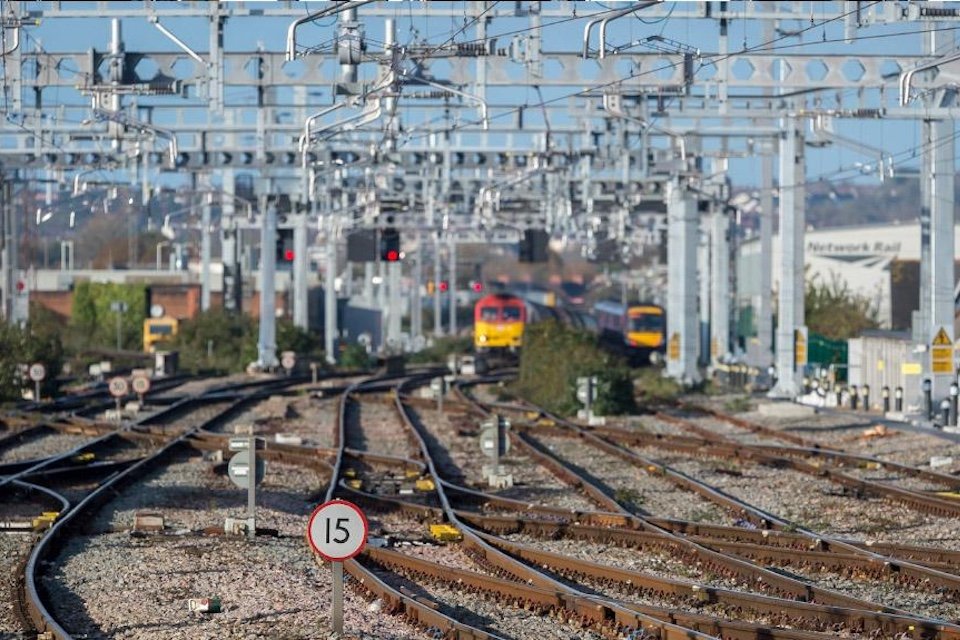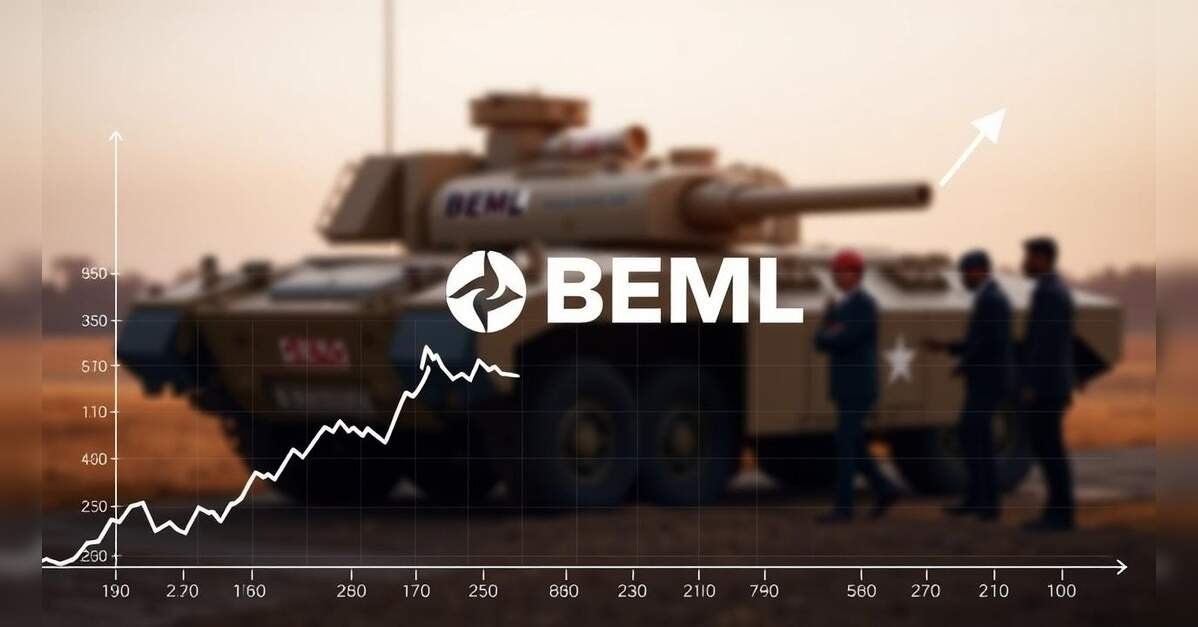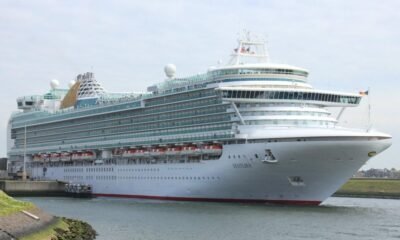Rail & Road
Keeping rail projects on track: how smart safety solutions are powering the UK’s infrastructure boom

With major infrastructure projects such as HS2 driving demand, rail improvement sites across the UK are under pressure to deliver safely, efficiently and without delay.
Behind the scenes it’s the logistics, planning and safety solutions that keep everything moving.
Here are seven top tips from Paul Goossens, operations director at SafeSite Facilities, to ensure a rail improvement project stays on track.
1. Offloading made easy – even on the toughest sites
Offloading is one of the biggest challenges on rail projects. That’s why truck-mounted forklifts and crane-equipped vehicles are key to handle the most complex deliveries.
Whether it’s a narrow roadside drop or a night-time install, it’s important to coordinate every detail to ensure materials are delivered and installed without delay. Remember it can take a long time to offload from a delivery vehicle.
2. Preventing unauthorised access: people and wildlife
Rail sites should be protected with a wide range of fencing which can prevent people and animals from accessing the site.
Wildlife fencing can even prevent animals from burrowing into the site and helps to ensure the construction industry protects wildlife.
These preventative measures are essential for safety and compliance. There are multiple options, including fencing, concrete and water-filled barriers to consider.
3. CCTV: protecting lives and reputations
Modern CCTV systems boast thermal imaging and AI detection, which provide real-time alerts and can trigger public address warnings to prevent accidents.
They can monitor site safety which can reduce the risk of accidents and deter young people and trespassers from entering a construction site.
Enjoying this article? Sign up for our FREE newsletter!
4. Built for high winds and heavy impact
Fencing systems with ballast are designed to withstand extreme conditions, including high winds, ensuring the site remains secure even in bad weather.
Ballast blocks and crash barriers ensure stability and safety, even in exposed or high-traffic areas.
5. Planning and compliance at every stage
Every delivery must be backed by detailed documentation to ensure it goes off without a hitch.
This includes driver IDs, vehicle MOTs, training certificates and lift plans for cranes which will be used to offload.
For projects like HS2, where 24-hour booking systems and strict access routes are expected, this level of planning is essential.
6. Speed and flexibility when it matters most
It’s crucial that delivery services can meet urgent site needs, ensuring that materials and equipment are available when required to prevent site closures and work stoppages.
Choose operators close to the site which can deliver urgently needed materials within 24 hours.
Whether it’s a last-minute request to secure a dangerous area or a planned overnight install, they should be ready to respond, delivering and installing within a single shift so the team can operate safely.
7. Risk assessment and expert advice
Before any order is confirmed, a full risk assessment should be completed with advice on the safest and most efficient solution presented.
If a delivery or installation is too risky, it’s crucial to communicate this and help find a better alternative.
For more information, visit: https://www.safesitefacilities.co.uk
Rail & Road
ORR serving up rail development on a plate

There is a strong appetite to invest in rail. However, barriers hold back the market, says the official regulator in the UK. The Office of Rail and Road (ORR) has conducted a review that reveals latent opportunities for rail infrastructure investment. Work is now underway at the regulator to remove barriers and streamline the investment process to support economic growth.
Subscribe to gain access to all news
Already have a subscription? Log in.
Choose your subscription
Or
Want to read this article for free?
You can read one free article per month. Enter your email and we’ll send you a free link to access the full article. No payment required.
Rail & Road
BEML Secures First International Rail-Metro Contract in Malaysia for ₹1 Million, ETInfra

State-owned firm BEML Limited has received its maiden overseas contract in the rail and metro segment from Malaysia valued at ₹1 million.
The work is for the retrofit and reconditioning of the Mass Rapid Transport System, according to a company stock exchange filing.
“…we hereby inform that BEML Limited received its maiden overseas contract in the Rail and Metro segment from Malaysia for the Retrofit and Reconditioning of the Mass Rapid Transport System on 09.08.2025, valued at ₹1 million,” the company informed stock exchanges.
BEML Limited, a leading multi-technology ‘Schedule A’ company under the Ministry of Defence, plays a pivotal role in serving India’s core sectors, including defence, rail, power, mining, and construction, by offering world-class products.
BEML operates in three verticals: Defence and aerospace, mining and construction, and rail and metro. It has state-of-the-art manufacturing facilities located in Bengaluru, Kolar Gold Fields (KGF), Mysore, and Palakkad, with a strong R&D infrastructure and a nationwide sales and service network.
Separately, in early July, BEML Limited inaugurated its newly built state-of-the-art warehousing facility, spread over 0.12 acres, at the Karnataka Industrial Areas Development Board (KIADB) Aerospace Special Economic Zone (SEZ), Bengaluru.
This marked a significant milestone in BEML’s long-term vision of supporting India’s aerospace growth and creating a robust supply chain ecosystem for global and domestic Original Equipment Manufacturers (OEMs).
The facility is designed not only to support BEML’s internal logistics, but also to offer warehousing and allied services to other OEMs, Tier-1, and Tier-2 players.
BEML envisions to create a Centre of Excellence for Aerospace Technologies within this SEZ, empowering India’s self-reliance journey in defence and aerospace while creating a vibrant ecosystem for innovation, collaboration, and growth.
Rail & Road
A Strategic Bet on America’s Infrastructure Renaissance

FTAI Infrastructure Inc. (NASDAQ: FIP) has made a bold move to position itself at the forefront of the U.S. infrastructure renaissance with its $1.05 billion acquisition of the Wheeling & Lake Erie Railway (W&LE). This transaction, secured through a $2.25 billion capital raise—including $1.25 billion in new debt and $1 billion in preferred stock from Ares Management—marks a pivotal step in the company’s evolution from a niche infrastructure player to a diversified rail powerhouse. For investors, the deal represents a rare opportunity to capitalize on a strategic acquisition that aligns with the Biden administration’s $1.2 trillion infrastructure bill, which is turbocharging demand for freight rail services.
Strategic Synergies and Geographic Expansion
The W&LE’s 1,000-mile network spans four industrial heartland states, connecting key manufacturing hubs, energy corridors, and ports. Its integration with Transtar’s Union Railroad in Pittsburgh creates a seamless, cross-regional rail network capable of handling surging demand for bulk commodities, automotive logistics, and intermodal freight. This acquisition not only expands FTAI’s operational scale but also diversifies its revenue streams, reducing reliance on any single sector.
The Biden-era infrastructure stimulus has already spurred a 15% year-over-year increase in rail freight volumes, according to the Association of American Railroads. FTAI’s expanded network is uniquely positioned to capture this growth, particularly in the energy transition—W&LE’s routes serve coal-fired power plants and emerging renewable energy projects, offering a dual-use asset in a shifting market.
Financial Engineering and Risk Mitigation
The acquisition’s financing structure is as innovative as it is ambitious. By issuing preferred stock to Ares Management and refinancing high-cost debt, FTAI has reduced its debt-to-EBITDA ratio from 76% to a more manageable 3–3.5x by 2025. This maneuver not only lowers interest expenses but also signals confidence in the company’s ability to generate $200 million in annual Adjusted EBITDA by 2026—a 60% increase from current levels.
Critics may point to the company’s heavy leverage, but the projected EBITDA growth and the inelastic demand for rail services in the U.S. suggest a strong margin of safety. The W&LE’s existing 250+ customers, including Fortune 500 companies, provide a stable revenue base, while the Biden administration’s focus on reshoring manufacturing could unlock new business opportunities.
A Hidden Winner in a Stimulus-Driven Market
FTAI’s acquisition is a masterclass in value creation. While the market has largely focused on high-profile infrastructure projects like EV charging networks or broadband expansion, FTAI is quietly building a cash-generative asset base with long-term durability. The W&LE’s routes are embedded in regions where rail infrastructure is aging and in need of modernization—a gap the Biden bill is designed to address.
Moreover, the transaction’s regulatory approval by the U.S. Surface Transportation Board (expected in Q3 2025) will cement FTAI’s status as a consolidator in the fragmented Class II rail sector. With only 12 Class II railroads in the U.S., FTAI’s scale and strategic positioning could deter competition and drive pricing power.
Why Act Now?
The key for investors is timing. FTAI’s stock currently trades at a discount to its projected intrinsic value, reflecting skepticism about its debt load and integration risks. However, the company’s refinancing strategy and the earnings call on August 8—where management will detail the path to EBITDA growth—could catalyze a re-rating.
For those willing to look beyond short-term volatility, FTAI offers a compelling case: a high-conviction bet on the infrastructure renaissance with a clear line of sight to earnings growth. As the market increasingly recognizes the value of physical infrastructure in a stimulus-driven economy, FTAI’s shares could see significant appreciation—especially if the company successfully executes its integration and debt-reduction plans.
In conclusion, FTAI Infrastructure’s railroad acquisition is not just a strategic win but a testament to the power of disciplined capital allocation in the post-pandemic economy. For investors seeking exposure to the Biden-era infrastructure boom without the hype of tech or crypto, FTAI presents a rare, undervalued opportunity. The question is no longer if the market will recognize this, but when.
-

 Brand Stories3 weeks ago
Brand Stories3 weeks agoBloom Hotels: A Modern Vision of Hospitality Redefining Travel
-

 Brand Stories2 weeks ago
Brand Stories2 weeks agoCheQin.ai sets a new standard for hotel booking with its AI capabilities: empowering travellers to bargain, choose the best, and book with clarity.
-

 Destinations & Things To Do3 weeks ago
Destinations & Things To Do3 weeks agoUntouched Destinations: Stunning Hidden Gems You Must Visit
-

 Destinations & Things To Do2 weeks ago
Destinations & Things To Do2 weeks agoThis Hidden Beach in India Glows at Night-But Only in One Secret Season
-

 AI in Travel3 weeks ago
AI in Travel3 weeks agoAI Travel Revolution: Must-Have Guide to the Best Experience
-

 Brand Stories1 month ago
Brand Stories1 month agoVoice AI Startup ElevenLabs Plans to Add Hubs Around the World
-

 Brand Stories1 month ago
Brand Stories1 month agoHow Elon Musk’s rogue Grok chatbot became a cautionary AI tale
-

 Brand Stories3 weeks ago
Brand Stories3 weeks agoContactless Hospitality: Why Remote Management Technology Is Key to Seamless Guest Experiences
-

 Asia Travel Pulse1 month ago
Asia Travel Pulse1 month agoLooking For Adventure In Asia? Here Are 7 Epic Destinations You Need To Experience At Least Once – Zee News
-

 AI in Travel1 month ago
AI in Travel1 month ago‘Will AI take my job?’ A trip to a Beijing fortune-telling bar to see what lies ahead | China













You must be logged in to post a comment Login